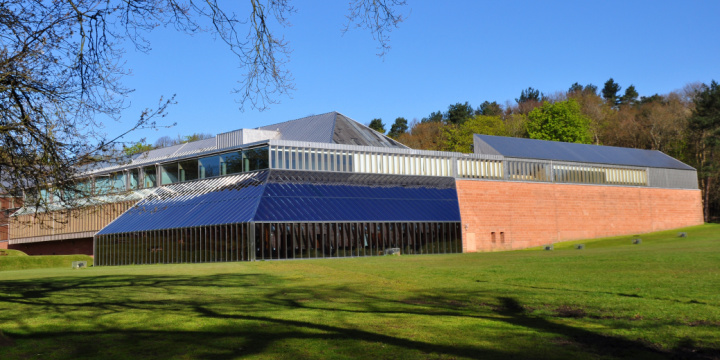 Controversy Over Nazi-Looted Items on Display at Reopened Scotland Museum
Controversy Over Nazi-Looted Items on Display at Reopened Scotland Museum
Shiryn Ghermezian
 The outside of the Burrell Collection before its refurbishing. Photo: Wikimedia Commons.
The outside of the Burrell Collection before its refurbishing. Photo: Wikimedia Commons.
An art museum in Glasgow, Scotland, reopened its doors on Tuesday for the first time in six years amid new accusations about Nazi-stolen items on display there, The Scotsman reported Monday.
The book “A Collector’s Life: William Burrell” claims that artworks in The Burrell Collection, which just completed a nearly $91 million refurbishment, were obtained through “forced sales” during Adolf Hitler’s reign in Nazi Germany, according to the outlet.
The news comes after the museum’s collection, which was created by the late Scottish shipping magnate William Burrell and his wife, made headlines after two of its artworks were reported to be stolen from Jewish owners in Germany in the 1930s. The Glasgow City Council was forced to compensate descendants of the original owners.
“Research by the current curatorial team has indicated that there are other works in Burrell’s Collection that may have been acquired as a result of forced sales,” stated the book co-authored by Martin Bellamy, the research and curatorial manager at Glasgow Museums, and Dr. Isobel MacDonald, a specialist in 19th and 20th century British collecting history. MacDonald’s PhD was on Burrell as a collector.
The book, which will be released on May 5, also revealed that in small notebooks he kept, Burrell was forthcoming about the provenance, description and price he paid for some of the items he collected. Bellamy and MacDonald wrote that “some of the practices that were employed would not be viewed as ethical today.”
Glasgow Life, which manages the Burrell Collection of almost 9,000 items on behalf of the Glasgow City Council, said the book’s claim about “forced sales” is correct, but would not specify what the items are. Leading Scottish historian Sir Tom Devine criticized the museum for refusing to reveal the works.
”As long as the provenance of these items is established by experts and curators, it should always be made public,” he told The Scotsman. “The question the public will ask is ‘what do they have to hide? I find the refusal rather curious. Curators of museums always want the truth to be out, and unvarnished at that.”
The museum also displayed in its reopening other looted items unrelated to World War II including a 200-year-old ritual wine vessel that was stolen during a raid of British troops on the Summer Palace in Beijing, China, in 1901, according to The Scotsman. The item dates back to the Han Dynasty.
Glasglow Life said in a statement that the looting of the palace was “officially sanctioned” and that “there is nothing to suggest Sir William Burrell was made aware works he was buying originated from forced sales.”
The Burrell Collection also has in storage an early 16th-century Swiss tapestry called “The Visitation,” which was bought by Burrell in 1938 after it was sold from the estate of a German Jewish woman named Emma Budge. Budge’s heirs laid claim to the item and Glasgow agreed to pay compensation for it, according to the Scottish Daily Express. The tapestry was not on display at the museum’s reopening but it did display a painting called “Pate de Jambon” by Jean-Baptiste-Simeon Chardin, whose Jewish owners were forced by Nazi authorities to sell.
Errol Francis, an art expert in the United Kingdom and head of the arts charity Culture&, told The Times it would be “shocking” if the museum displayed to the public Nazi-looted items in its reopening. He also called for an audit of every item in the Burrell Collection to make sure nothing else can be connected back to the Holocaust.
Zawartość publikowanych artykułów i materiałów nie reprezentuje poglądów ani opinii Reunion’68,
ani też webmastera Blogu Reunion’68, chyba ze jest to wyraźnie zaznaczone.
Twoje uwagi, linki, własne artykuły lub wiadomości prześlij na adres:
webmaster@reunion68.com
